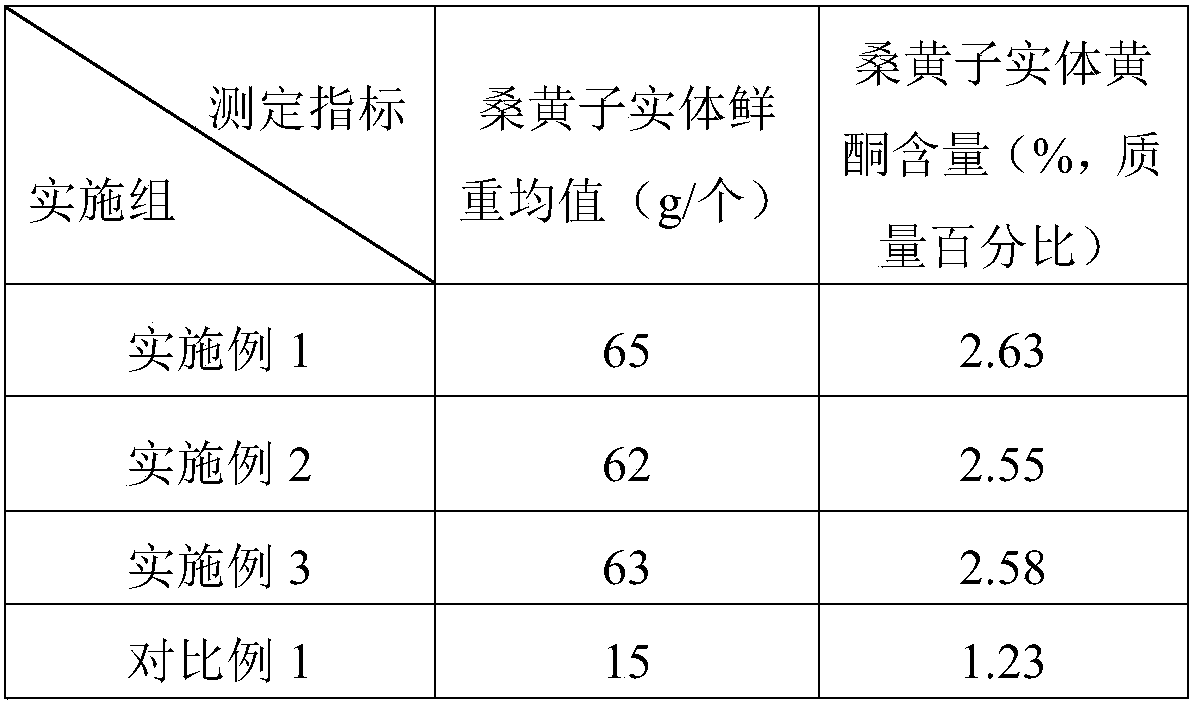Method for cultivating wild-imitated cut-log phellinus igniarius in natural forest
A cultivation method and technology of natural forest, applied in the field of cultivation of imitation wild segment of Phellinus linteus under natural forest, can solve the problems of restricting production development, high pollution rate, low quality and the like, so as to improve comprehensive utilization efficiency and benefit, and avoid cultivation cost. , the effect of high yield
- Summary
- Abstract
- Description
- Claims
- Application Information
AI Technical Summary
Problems solved by technology
Method used
Image
Examples
Embodiment 1
[0035] The natural Camellia oleifera forest in the western mountainous area of Hangzhou was selected, which is far away from pollution sources and has no pests and diseases. The soil type of the forest land is yellow brown soil, the thickness of the soil humus layer is 1cm, the soil pH is 5, the altitude is 100m, the slope of the forest land is 1°, the leeward faces the sun, and the forest is lush. The density is 0.6, the number of plants is 1000 per hectare, the ventilation and drainage performance is good, and there are clean water sources around the woodland.
[0036] The strains were made in January of that year, the fungus sticks were made in April of that year, and the fungus sticks entered the woodland in September of that year, and the fruiting period was from October of that year to December of the next year.
[0037]The preparation of bacterium stick: oak tree trunk is cut into the section wood of 15cm long, and section wood moisture content is 30% (mass percentage)...
Embodiment 2
[0043] Choose the natural miscellaneous wood forest in the western mountainous area of Hangzhou, which is far away from pollution sources, free from pests and diseases, the soil type of the forest land is purple soil, the thickness of the soil humus layer is 20cm, the soil pH is 8, the altitude is 1000m, the slope of the forest land is 45°, the leeward is facing the sun, and the canopy is closed The density is 0.9, the number of plants is 3000 per hectare, the ventilation and drainage performance is good, and there are clean water sources around the forest land.
[0044] The strains were made in March of that year, the mushroom sticks were made in August of that year, and the mushroom sticks were put into the forest in September of that year, and the fruiting period was from October of that year to December of the next year.
[0045] The preparation of bacterium stick: mulberry tree trunk is cut into the section wood of 30cm long, and section wood moisture content is 50% (mas...
Embodiment 3
[0051] Select the natural coniferous and broad-leaved mixed forest in the western mountainous area of Hangzhou. The natural coniferous and broad-leaved mixed forest is composed of masson pine, Chinese fir, oak and a small number of other broad-leaved tree species. It is far away from pollution sources and has no pests and diseases. The soil type of the forest land is yellow soil And sandy soil, the thickness of the soil humus layer is 12cm, the soil pH is 7, the altitude is 600m, the slope of the forest land is 20°, the leeward is sunny, the canopy density is 0.8, the number of plants is 2000 plants / ha, the ventilation and drainage performance is good, and the surrounding forest land There is clean water.
[0052] The strains were made in February of that year, the mushroom sticks were made in June of that year, and the mushroom sticks were put into the forest in September of that year, and the fruiting period was from October of that year to December of the next year.
[00...
PUM
| Property | Measurement | Unit |
|---|---|---|
| Diameter | aaaaa | aaaaa |
| Length | aaaaa | aaaaa |
Abstract
Description
Claims
Application Information
 Login to View More
Login to View More - R&D
- Intellectual Property
- Life Sciences
- Materials
- Tech Scout
- Unparalleled Data Quality
- Higher Quality Content
- 60% Fewer Hallucinations
Browse by: Latest US Patents, China's latest patents, Technical Efficacy Thesaurus, Application Domain, Technology Topic, Popular Technical Reports.
© 2025 PatSnap. All rights reserved.Legal|Privacy policy|Modern Slavery Act Transparency Statement|Sitemap|About US| Contact US: help@patsnap.com



